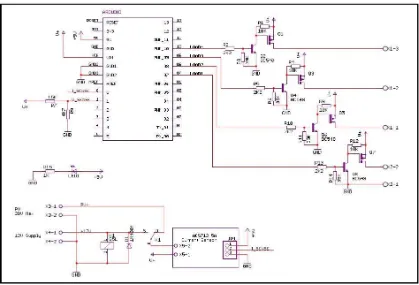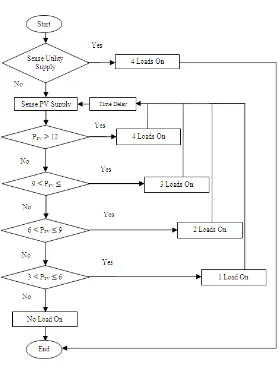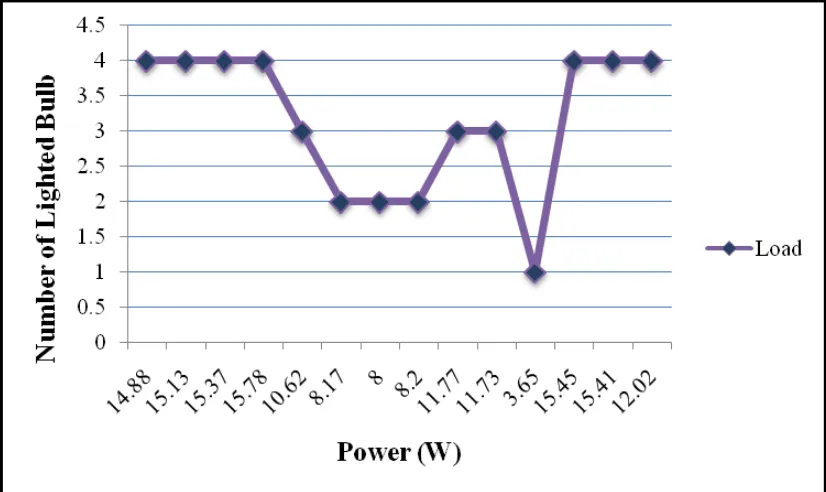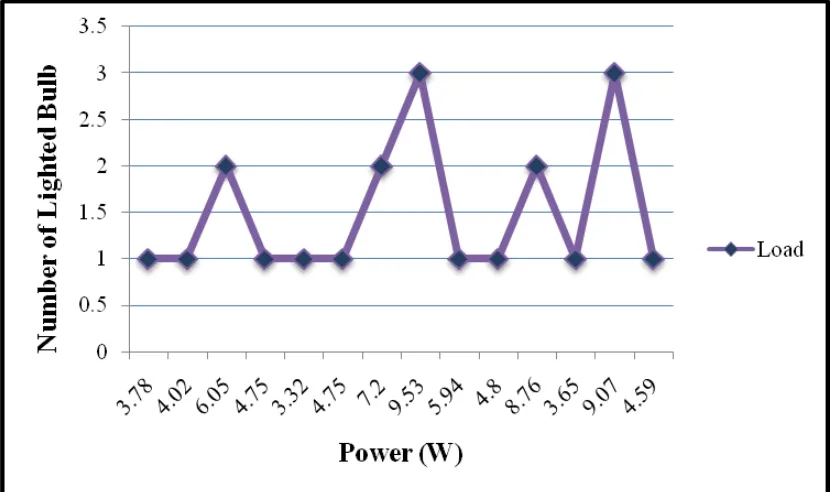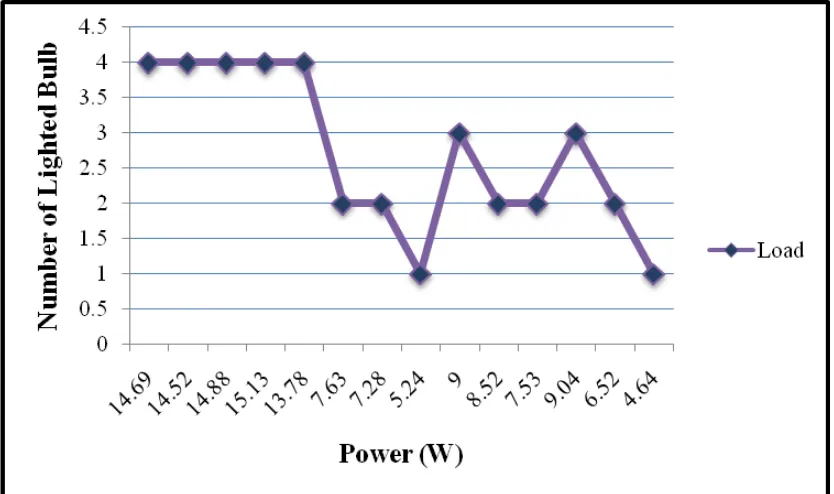ISSN 0973-4562 Volume 9, Number 20 (2014) pp. 6895-6906
Universiti Teknikal Malaysia Melaka, Hang Tuah Jaya, 76100, Durian Tunggal Melaka Malaysia worldwide. This paper presents the development of automatic load-shedding strategy for stand-alone photovoltaic system. The design of this project shows the characteristics of solar energy and operation of load-shedding strategy. The main objective of this project is to implement the load-shedding strategy as an emergency controller for stand-alone photovoltaic system. To achieve the objective, research of basic understanding related to this project is very important to understand more about the characteristics of each element in this project. The circuit of the load-shedding system is designed in the SoftCad Eagle PCB Design software. The algorithm controlling the load-shedding scheme is developed in the Arduino IDE. Then, the coding programmed is burn in the microcontroller board and installed with the hardware. Output of this project can support the DC loads and load-shedding strategy scheme is performed based on the designed algorithm.
Keywords –stand-alone photovoltaic system, load-shedding strategy, DC loads.
Introduction
livelihood, healthcare and leisure depend on a constant power supply. Thus, even a reliability and providing alternative energy supplies to the grid system[1].The islanded microgrid operation is one of the methods to keep certain places to receive power supply. This operation is supported by load-shedding scheduling which keeping the power system stability by turn off some of the loads. For this project, the application of load-shedding strategy for islanded microgrid system during power outages is implemented in a small scope where photovoltaic (PV) technology is used as a power supply.PV generation provides a good solution for distributed energy generation especially in rural area [2]. PV systems are low maintenance, provide a cleaner, environmentally friendly alternative, and very reliable source of power. It is often used as a back-up for the grid system or operates independently without grid connection. Successful stand-alone systems generally take advantage of a combination of techniques and technologies to generate reliable power, reduce costs, and minimize in convenience. Therefore, this stand-alone PV system will supply several loads and to keep the system balance, load-shedding strategy will be implemented in this system.
Genuinely, PV entail the process regarding the conversion of the radiant energy from the sun (solar energy) directly into the electricity. Since the solar energy is the most abundant energy source on the planet, photovoltaic system can be classified as a vital technology that needs to be explored extensively in order to preserve our planet. PV sources can provide power supply to from the small electronics to homes and large commercial businesses. PV systems consist of various type of configuration such as grid connected PV system, direct PV system, stand-alone PV system and hybrid system [3].
Stand-alone PV systems is designed to operates independently, not involving with electricity grid connection [4]. These system can be powered by PV generator alone or combine with utility source as an additional source such as wind and engine-generator and these system are called PV-hybrid system.
Energy efficiency has become an issue debates where several factors may disrupt the effiency of the system such as deregulation of electrical energy distribution, the increasing price of electricity, and the implementation of rolling blackouts [5]. These factors affect the stability of the whole power system. For example when a sudden large industrial load is switched on, it will disrupt the grid system and the system become unstable. Particularly, the differences between the generated power and the load demand caused by disturbance which reduces the generation capacity of the system, thus affect the frequency of the system. The voltages become unstable when the power system unable to meet the reactive power demands of the loads [6].
system [7]. The loads are curtailed until the available generation could supply the remain loads. Load-shedding strategy balances the real and reactive power supply and the load demand in the system to prevent from the excessive frequency or voltage decline.
The location bus for the load-shedding will be determined based on the load importance, cost, and distance to the contingency location. The acceptable algorithms are developed based on the number of load shedding steps, amount of load that should be shed in each step, the delay between the stages, and the location of shed load.
Microgrid is an low voltage (LV) network for examples a small urban area, a shopping center, or industrial park, which the loads and several small modular generation systems are connected to it. Microgrid provides both power and heat to local loads, combine heat and power (CHP) to the system [8]. Besides that, the small modular generation systems can be referred to systems such as photovoltaic (PV), fuel cells, microturbines (MT), small wind turbines (WT) and storage devices (Fly wheels, super capacitors, batteries, and so on), which are lead to a new energy system paradigm [9].
There are two different operating conditions of Microgrid system. The first one is the Normal Interconnected Mode where the Microgrid is connected to a main Medium Voltage (MV) network, either being supplied by it or injecting some amount of power into the main system [8, 9]. The second one is the Emergency Mode where the Microgrid operates autonomously, in a similar way to physical islands, when the disconnection from the upstream MV network occurs due to planned or unplanned events for examples, maintenance actions or faults in the MV network, respectively.
Microgrid can operates either in grid connected or islanded operation mode. In the Microgrid management, it requires the balance between supply and demand of power. The Microgrid exchanges power to an interconnected grid to meet the balance during the grid-interconnected mode. On the contrary, during islanded mode, the microgrid should meet the balance using the decrease in generation or load shedding [10].
Methodology
Figure 1: The flowchart of project plan
Project planning
The algorithm for controlling the loads which depends on the supply is developed in the Arduino IDE. These algorithms will decide which loads will on depends on the acceptable power range of the supply. This coding must be suitable and can work well when implemented with the hardware. After the implementation of the coding with the hardware, both will be tested and troubleshoot to ensure either the combination of both hardware and coding fulfill all the specification of the project and achieve its objectives. When the test is success all the relevant results needed are recorded and discussed.
The procedure of the circuit design
The schematic diagram of the Load-shedding Strategy circuit have been done by using SoftCad Eagle PCB Design Software as in Figure 2.
Figure 2: The schematic diagram of Load-shedding Strategy circuit
Figure 3: The process of whole circuit
RESULTS & DISCUSSIONS
Multiple AC-DC Power Adaptor Test Results
Power adaptor will give 12V to the system which has sufficient power to accommodate all four loads. The power supplied by the adaptor is depends on the load and the rating for current is 1.2A. Moreover, all bulbs will light up during power adaptor consumption. Nevertheless, in order to make better understanding about the load-shedding strategy, the multiple AC-DC power adaptor is varies in several values, 4.5V, 6V, 7.5V, 9V, and 12V.
Based from the results in Figure 5, there were changes in the number of lighted bulb linearly towards the changes in the value of power sensed from the supply. When the power is greater more loads can be on, while decrease in power will also decrease the numbers of bulbs light up. The highest power sensed by Arduino is 15.78W which is sufficient enough to light up the four loads. While, the lowest power draws from the supply is 3.65W which can light up only one load.
Figure 5: Graph of Multiple AC-DC Power Adaptor Test Results
Solar Panel Test Results
Experiment 1 (Morning Session)
The test was conducted in the morning at 9 a.m. where the wheather is moderate. The power draw from the solar panel is constantly small.
power sensed by Arduino is 9.53W which is sufficient to light up only three loads. While, the lowest power draws from the supply is 3.32W which can light up only one load. The performance of the solar panel is low at this moment as the irradiance of the sun is low at the very moment. It is hardly to produce power more than 9W which can light up three loads not to mention four loads. Thus, more loads need to be shed and from the graph mostly two and three loads are shed because of the deficiency of power.
Figure 6: Graph of PV Supply Experiment 1 Results
Experiment 2 (Afternoon Session)
The test was conducted in the afternoon at 12.30 p.m. where the weather is sunny. The power draw from the solar panel is slightly higher than morning session.
Figure 7: Graph of PV Supply Experiment 2 Results
Experiment 3 (Evening Session)
The test was conducted in the evening at 5.30 p.m. where the weather is partly cloudy. The power draw from the solar panel is slightly lower than in the afternoon.
Figure 8: Graph of PV Supply Experiment 3 Results
Combination of Multiple AC-DC Power Adaptor and Solar Panel Test Results This experiment was conducted using both supply which are power adaptor and PV supply. The experiment is conducted to observe the operation of the system when the power adaptor gave sufficient supply to the loads, however suddenly the power adaptor was off and the PV took over to supply the loads.
Figure 9: Graph of Combination of Multiple AC-DC Power Adaptor and PV Supply Test Results
Conclusion
Acknowledgements
The authors would like to thank Universiti Teknikal Malaysia Melaka (UTeM) and Ministry of Education Malaysia for the financial supports given through Research Grant.
References
[1] Alias Khamis, A. Mohamed, H.Shareef, M.N.M. Nasir:Design and Simulation of Small Scale Microgrid Testbed. 2011 Third International Conference on Computational Intelligence, Modelling & Simulation, pp 288-292.
[2] M. N. M. Nasir, A. Jusoh, A. Khamis, DC Bus Instability Driving by Photovoltaic Source with Constant Power Load, Applied Mechanics and Materials, Vol. 313 – 314, pp. 853-857, 2013.
[3] S. Sopitpan, P. Changmoang and S. Panyakeow: PV Systems With/Without Grid Back-up for Housing Applications. Photovoltaic Specialists Conference, 2000 pp 1687 - 1690
[4] A. Hansen, P. Lars, H. Hansen and H. Bindner: Models for a Stand-Alone PV System. Risø National Laboratory, Roskilde, December 2000, ISBN 87-550-2776-8. [Online]. Available:http://www.risoe.dk/rispubl/VEA/ris-r-1219.htm [5] Newsham, G.R. & Birt, B.J.(2010).Demand Responsive Lighting-A Field
Study.Leukos,6(3),203-226.
[6] Joshi, Poonam, "Load Shedding Algorithm Using Voltage and Frequency
Data" (2007). All Theses. Paper 240.
http://tigerprints.clemson.edu/all_theses/240
[7] H. Bevrani, A. G. (2010). Power System Load Shedding: Key Issues and New Perspectives. World Academy of Science, Engineering and Technology, May 2010, Issue 41, p199.
[8] J. P. Lopes, C. Moreira, and A. G. Madureira, “Defining control strategies for MicroGrids islanded operation,” IEEE Trans. Power Syst., vol. 21, no. 2, pp. 916–924, May 2006.
[9] M. Kohansal, M. J. Sanjari and G. B. Gharehpetian. A novel approach to frequency control in an islanded microgrid by load shedding scheduling. Proceedings of the International Conference on Renewable Energies and Power Quality (ICREPQ'13), pp 454-460, Madrid, (2013).

